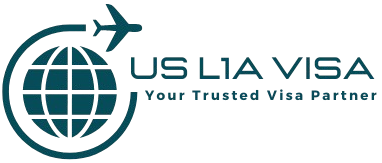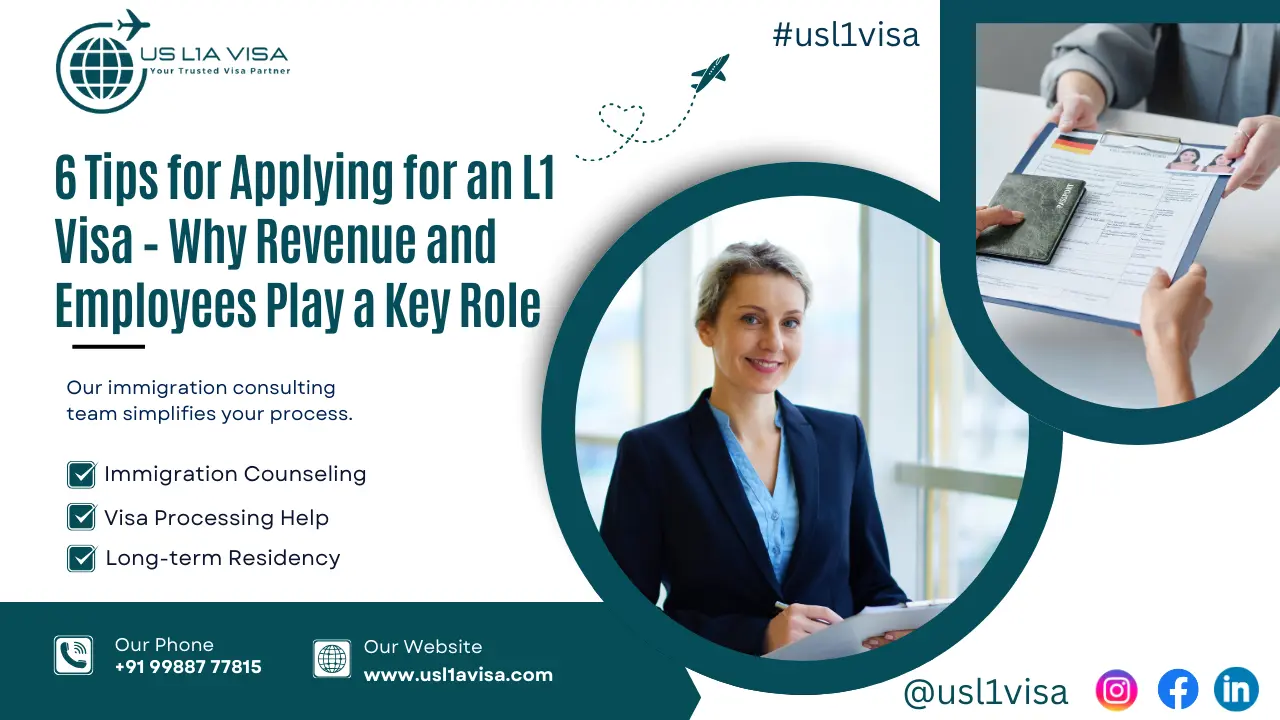6 Tips for Applying for an L1 Visa – Why Revenue and Employees Play a Key Role
The L1 visa is a very effective instrument for intra company transfer of employees between different countries and in particular between the United States and another country. If you are considering growth and establishing new branches or offices or transferring employees for managerial positions, it’s important to know all the peculiarities of applying. There are two primary determinants of the likelihood that an application for an L1 visa will be approved: revenue and employees. Below is a step-by-step guide on how to write a successful CV and where to apply for the intended job.
Overview in Brief – the L1 Visa
L1 visa is also one of the strongest Immigration Policies in the United States. It is employed as a tool to enable companies worldwide to transfer employees from the parent country to the United States. It is an essential instrument for any enterprise interested in the growth and relocation of important human assets to the United States. But for you as a company executive, an HR professional, or an employee, who is thinking about using this avenue, it is important to know the fundamentals of the L1 visa.
Here, you will learn the basics about the L1 visa, such as what it is, the types of L1 visas, who can apply for it, the advantages of the program, and how to apply.
What is the L1 Visa?
The L1 visa is an intra company transfer visa, which permits multinational companies with a base for business in the USA to transfer some employees from an affiliate or subsidiary or other foreign offices. It normally applies to directors, managers and other workers who have certain expert knowledge in specific areas.
Types of L1 Visas
The L1 visa is divided into two main categories:
L1A Visa:
- Intended for executives and managers of organizations.
- Enables a transfer up to 7 years (in increments) ahead.
L1B Visa:
- Reference only For the use of employees who have sufficient information or knowledge on the company’s products, its systems or processes.
- This permit allows a stay of up to five years only.
Now, let’s discuss those six useful suggestions.
1. Foreign Entity Should Have Gross Revenue of at Least $500k
For an L1 visa application to be approved the foreign company should have a turnover of not less than five hundred thousand United States dollars of the previous fiscal year. More to the point, it is not a statutory obligation. If you read the requirements for an L1 visa, you will not notice that the foreign company has to make at least $500,000 in revenue. However, in our firm and as practice in L1 visa application matters our observation has been that if the revenue is low then USCIS can raise various incidents regarding the foreign entity. This is particularly so when the revenue generated is too low; USCIS may look at the possibility that the prospective L1 visa beneficiary was not a ‘manager,’ or ‘executive,’ in reality. Also, they can question whether the Company abroad is a real one, or is an operating one. In other words, if the gross revenue of the foreign company is below $500 000, then it means that USCIS is more likely to scrutinize the L1 application than if the gross revenue of the foreign company is more than $ 500 000.
2. Foreign Entity Should Have At Least 10 Full-Time Employees
This is also useful to make sure that the foreign entity has ten or more full-time employees on their payroll. Similar to the gross revenue tip discussed above, no specific number of employees is forbidden by law. However, as a company that has dealt with many L1 applications, when the number of employees for the foreign organization is small, USCIS can come up with some other concerns relating to the intended L1 visa beneficiary for the corporation. To establish a foreign residence, it is required for the beneficiary to show that he or she worked for the foreign employer in a managerial capacity, in an executive capacity, or as an employee with specialized knowledge. If in some overseas organizations, there are only a few workers, it proves complicated to argue that the given individual beneficiary performed managerial, and executive functions, or acts as a highly skilled knowledge-based employee.
3. US Company Should Have Sufficient Physical Space to Operate the Business
If the management of the U.S. company is to apply for L1 successfully then the enterprise should have adequate physical facilities for its operations. In essence, this means that the U.S. company should either have a lease they hold or some form of property ownership that would allow for the running of the business from this place.
This is an essential condition since the number of new employees that any U.S. company should accommodate must accommodate all employees in the projected plan up to year five of the business plan. In some of the L1 visa applications, you have to attach a plan that outlines financial projections and project staffing through to the fifth year. To satisfy that requirement, you should ideally have space in place to house all employees solicited through the year five employment forecast.
For instance, if the U.S. company has a small office space, USCIS will refer to the business plan and ask how 20 employees planned for year five would fit into a 100 sq ft office.
4. U.S. Company Should Have Infrastructure in Place
The U.S. entity should already exist, or it must be capable of existing, as a requirement of a sound L1 visa. That means that there need to be systems put in place through which the moment the L1 visa beneficiary arrives in the USA, the U.S. company should immediately be functional.
5. Foreign Company’s Revenue Needed to Support the New U.S. Company
USCIS will also review whether the foreign company has the capacity, either by size/revenue figures or the necessary capital investment, to demonstrate that the foreign company can support the US entity during the period of start-up of the US company. To put it into other words, the L1 visa contains the opportunity to be an L1 new office, which is a fresh business in the United States to be specific. Make sure that you are in a position to demonstrate that the foreign entity has established revenues or is sufficiently established to support the US business in the period of infancy.
6. Have an Organizational Chart (specific for L1-A managers or executives)
You should submit an organizational chart with your L1 application as the intended beneficiary of the visa. This will show your role with the foreign firm and your potential position with the U.S. entity. Ideally, your organizational chart should demonstrate that you have subordinates and that those subordinates are competent employees who possess the bachelor’s degree or higher needed to carry out their duties.
If you take this advice a step further, presenting USCIS with an organizational chart that displays two tiers of employees below you can strengthen your case even further. One tier is weaker than two levels beneath your rank. Subordinates should be competent, and you should have competent subordinates. This makes it more convincing that you are an executive or management.
Conclusion
L1 visa application is never an easy process, even more so when it comes to showing the revenue and employee-related aspects. These factors are crucial as they bring out the credibility and size of the business enough to convince that it can manage limited inter-company transfers well. There are other ways such as revenue growth, Organizational structure, and signs that depict competent employees that applicants can use to build strong arguments and improve their chances of getting approvals. As you can see, knowledge of the process and supported application increases the chances of success greatly.
Adhering to these six guidelines should help you manage all the challenges of an L1 visa application and will thus create a proper pathway for preparation.


